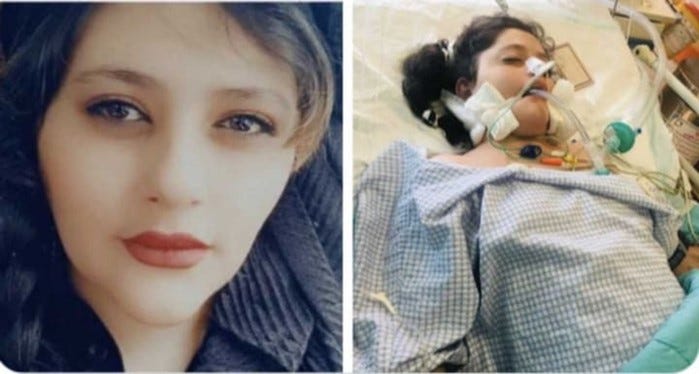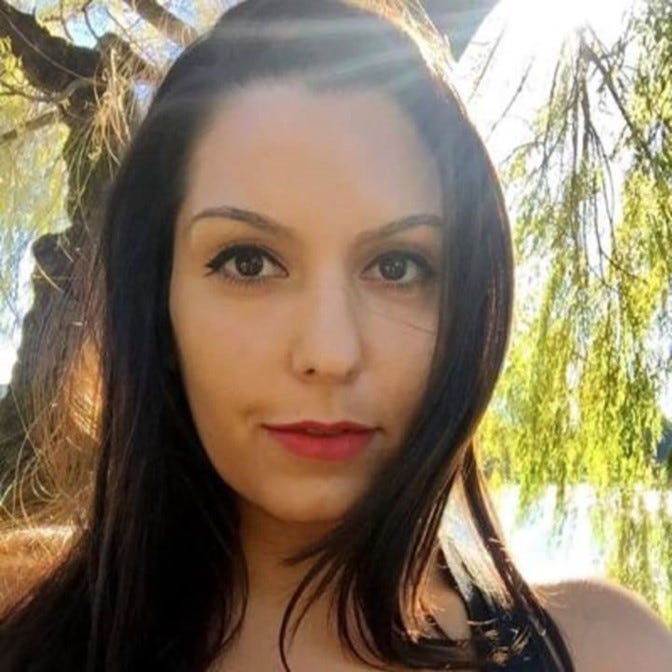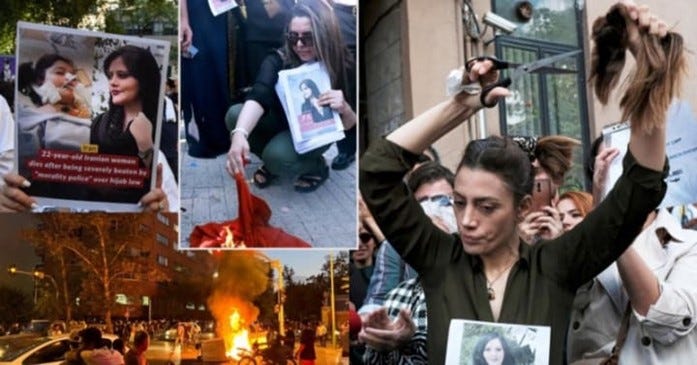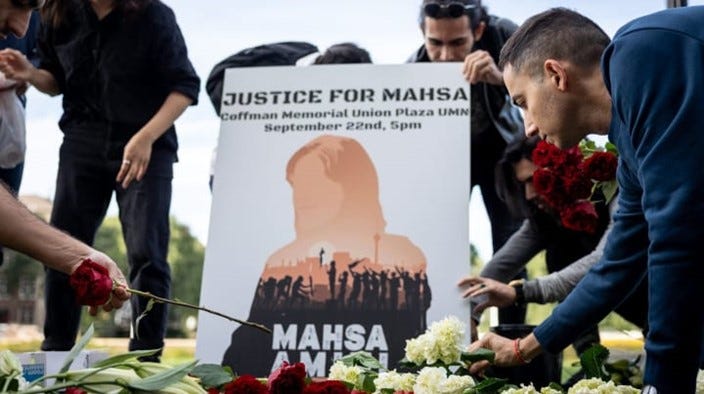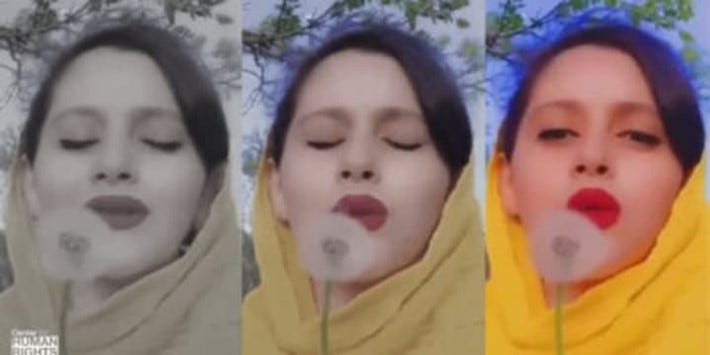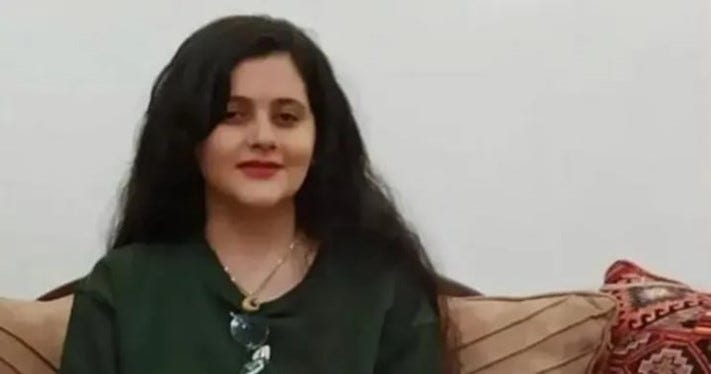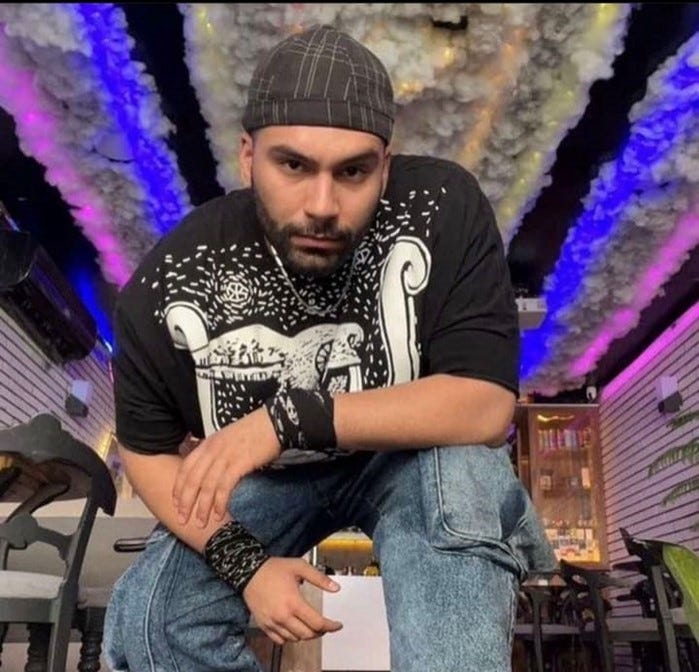Public Health Policy Reviews 17:
20 Years of US Military Domination in the Middle East – Part 4 – Mahsa Amini and Iran.
Image courtesy: 19thnews.org.
NOTE: Nazia Saeed, a Human Resources professional living in Abu Dhabi, United Arab Emirates, contributed significant research and writing for parts of this article.
**********
On September 16th, 2022, Iran’s Gašt-e Eršād (Guidance Patrol or “Morality Police”) killed Mahsa Amini - a 22-year-old Kurdish-Iranian woman in Tehran.
The “Morality Police” detained Amini for improperly wearing her “Hijab,” the headscarf required of all females walking or traveling via a vehicle in public. The Guidance Patrol then incarcerated her at a “re-education center” for “modesty lessons.”
Tehran police and the Gašt-e Eršād claimed Mahsa Amini died of a heart attack. However, Amini’s family says that the “Guidance Patrol” beat her to death.
Witnesses to Amini’s arrest reported that officers struck her in the head and beat her in a police van after her arrest. An unofficial autopsy found a skull fracture and physical trauma on her body.
Ms. Amini’s death sparked protests in Iran against the “Guidance Patrol” and the country’s long history of state-sanctioned female oppression.
**********
Mahsa Amini (left — before her September 2022 arrest, and right — in a hospital after Iran’s Gašt-e Eršād (“Guidance Patrol” or “Morality Police”) attacked her in Tehran, Iran. Image source: unknown.
Surveillance videos of Ms. Amini arriving at a court building in Tehran, conferring with counselors in a courtroom, passing out on the courtroom floor, and paramedics transporting her to a hospital went viral on social media.
Led by young Iranian women in college and high school, the succession of videos sparked public protests of the fundamentalist Shiite Islamist regime. The religious extremists who have controlled the Iranian government since 1978 have a history of brutal violence and discrimination against women and girls in Iran.
Anger over the beating and death of Mahsa Amini by Iran’s “Morality Police” quickly spread across every area of the country and became international news. Despite attempts by Iranian police and religious authorities to suppress the demonstrations, Ms. Amini’s death generated international outrage across social media.
**********
Jasmin Ramsey, Deputy Director of the Center for Human Rights in Iran.
Jasmin Ramsey, an Iranian-born Deputy Director of the Center for Human Rights, said the protests were widespread.
“Every part of society has joined them. Young women walking in the streets are removing their Hijabs, and grandmothers are doing the same thing,” said Ramsey.
Jasmin Ramsey continued, “And it’s not just in the bigger cities and towns. It’s (the protests are) also happening in small villages.”
From September to October 2022, the #MahsaAmini and #womenlifefreedom “hashtags,” along with other themes associated with Mahsa Amini’s death, dominated internet traffic across all social media platforms. In response, Iranian telecommunication regulators immediately shut down access to WhatsApp and Instagram, the country’s most-used social media websites.
As the protests intensified into October, the Iranian government began cutting power to the region’s mobile internet services.
**********
Female protesters in Iran remove and burn their hijabs and cut their hair in protest of the killing of Mahsa Amini. Image source: unknown.
Even though most Western observers believed that the Iranian police would quickly crush the protests, as they did in 2019 and 2020, the protests only intensified.
Politicians and celebrities from the North American continent and Western Europe also began to express outrage at Ms. Amini’s death. Former US President Bill Clinton, former US Secretary of State Hillary Clinton, then-Speaker of the US House Nancy Pelosi, French actress Juliette Binoche, and British author J.K. Rowling – among others – sparked worldwide public support for the protests in Iran.
Regrettably, young women in Iran and the men who support them should have been more careful about relying on people in the US or Western Europe for long-term support.
America and its Western allies have a sordid history of betraying grassroots social uprisings amongst citizens living in authoritarian regimes across the planet.
**********
Iran: Sanctions and Healthcare Strain
University of Minnesota students created a makeshift memorial for Mahsa Amini on the college campus in 2022. Image courtesy: MPRNews.org.
The abysmal economic, political, civil rights, and public health conditions in Iran that led up to Mahsa Amini’s death and the protests are a direct result of a half-century of US political policy in the country.
America, Canada, and their Western European allies have imposed sanctions on Iran that have had a devastating impact on the country’s public health sector. Restrictions on financial transactions and the importation of medical supplies have led to shortages of essential medications and equipment, hindering Iranian healthcare providers’ ability to adequately respond to the health and wellness needs of the Iranian population.
The consequences of these sanctions have been particularly dire for vulnerable groups, including children and individuals with chronic illnesses. Moreover, the two most recent former US presidents’ policy objectives and personal feelings led directly to public health conditions in Iran before the Mahsa Amini protests in 2022.
**********
Former US President Donald J. Trump. Photo image courtesy of the Library of Congress on Unsplash.
The executive administration of former American President Barack Obama (2008 - 2017) severely increased Islamic radicalization and socio-economic stratification in Iran and the surrounding countries.
The 2015 Iran Nuclear Deal agreement culminated Mr. Obama’s policy objectives in the Middle East. As bad as Mr. Obama’s term in office was for the entire region, the Iran Nuclear Deal afforded the Iranian government the removal of some of the economic sanctions placed against the regime.
Former US President Donald Trump exhibited intense personal resentment toward Barack Obama. His extreme hostility toward “all things Obama” influenced his opposition to President Obama’s diplomatic legacy.
As a result, President Trump took executive action to end American participation in the Iran Nuclear Deal in 2018. Thus, Mr. Trump reinstituted the punishment of international economic sanctions in 2018.
America, Canada, and ALL their allies in Western Europe created the modern social, political, and economic environment in Iran that inevitably led to the horrific death of Mahsa Amini.
**********
Mahsa Amini. Image courtesy of Iran Human Rights.org.
The women of Iran — and the men who joined their daughters, wives, sisters, mothers, and female acquaintances in protests forgot what kind of religious leaders control the country.
The Iranian regime has a long history of using violence to crush public dissent. Protesters who became inspired to resist the regime after Mahsa Amini’s death terrified religious autocrats and Iran’s domestic security forces. They desperately wanted to prevent the protests from igniting a new “Arab Spring” in the Middle East.
After initially expressing contrition for Mahsa Amini’s death, the Iranian government eventually initiated a brutal crackdown on public dissent. The “bait and switch” strategy began with Iranian President Ebrahim Raisi.
President Raisi called Ms. Amini’s family to ensure an investigation. “Your daughter is like my own daughter, and I feel that this incident happened to one of my loved ones,” said Raisi.
**********
Did Iran Eliminate the “Morality Police?” The answer is NO.
Mahsa Amini. Image courtesy: The Mahsa Amini family.
Iranian Attorney General Mohammad Jafar Montazeri claimed that Iran would suspend the “Guidance Patrol.”
While Montazeri also said the judiciary would continue monitoring public conduct, his announcement proved that the demonstrations began to embarrass the Iranian regime internationally.
After over three months of persistent protests, officials like Dr. Masoud Eslami –the Iranian ambassador to Ireland – began to promote the official government narrative zealously. On international media platforms, Dr. Eslami and other officials from Iran continued to spread the falsehood that Mahsa Amini died of a heart attack.
When an RTÉ One news anchor asked Dr. Eslami about Mahsa Amini’s head trauma and physical wounds on November 23rd, he claimed – “(There is) No evidence of this at all.”
The public protests by Iranian citizens and subsequent international outrage over Ms. Amini’s death eventually elicited an extreme official reaction from 227 members of Iran’s 290-person Parliament.
**********
On December 7th, 2022, the Iranian regime executed Mohsen Shekari. Mr. Shekari was a 23-year-old Iranian citizen involved in the Mahsa Amini protests, which began in September 2022. Image courtesy: Facebook.
The Iranian parliamentarians’ statement announced that law enforcement and the judicial system will deal with people who engage in “moharebeh” (waging war against God) “decisively,” including responses that “teach an example.”
Amnesty International and other human rights groups in Iran reported that security forces caused the deaths of hundreds of people after the public protests began in September 2022. International news reports claimed that the Iranian state sentenced up to 15,000 people to death for participating in the demonstrations across the country.
Iran began officially executing Mahsa Amini protesters in November 2022. It was difficult for us to reference exact statistics on judicially sanctioned killings in Iran. But from what we could find online, the most recent human rights reports say that Iran has executed about 2,000 civilians since September 2022.
**********





